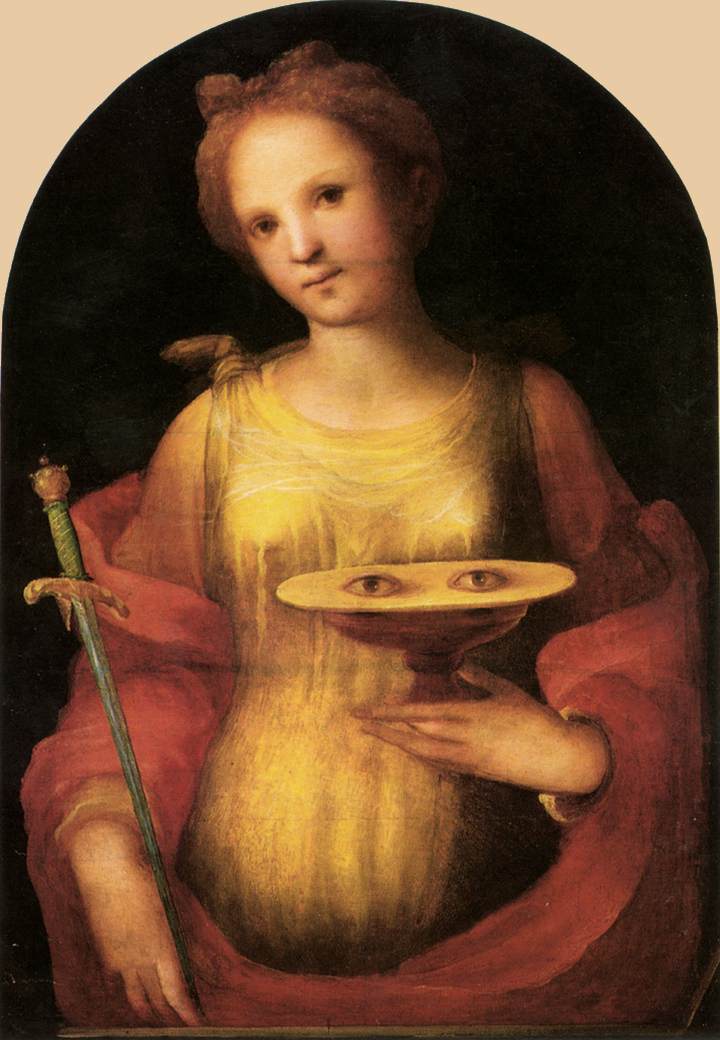Thursday, May 28th, 2009
Your Beautiful Eyes
I know that my blog seriously is lacking in posts on medieval art. I keep starting posts on sundry medieval topics, but I always get sidetracked and excited about something else. It’s not that I dislike medieval art – I just keep getting distracted. Such it is with today’s post. I started reading something about one of the portals at Chartres cathedral, which reminded me of something else, and ultimately, I got distracted by these paintings:
 Domenico Beccafumi, Saint Lucy, c. 1521
Domenico Beccafumi, Saint Lucy, c. 1521
 Franceso del Cossa, Saint Lucy (detail), c. 1473-74
Franceso del Cossa, Saint Lucy (detail), c. 1473-74
(You can see the full image and more details here)
Go ahead and do a double-take. Don’t second guess yourself – Saint Lucy is holding a plate with a pair of eyes in the top image, and in the bottom image the saint’s eyes transposed into some type of lovely flower (!).
I think that the stories of Catholic saints are really interesting, and Saint Lucy is no exception. The Catholic Encyclopedia gives interesting details about Lucy’s life, but doesn’t mention one of the fascinating legends regarding Lucy’s eyes. I imagine that this legend has affected more representations of Lucy than anything else.
Lucy of Syracuse lived in the 4th century, during the time that Diocletian persecuted the early Christians. According to legend, Diocletian gouged out Lucy’s eyeballs but later her eyes were miraculously restored. The miracle must explain why in art she is holding her eyes, while also having eyes in her sockets. Anyhow, I’m sure that patrons and worshipers wouldn’t particularly enjoy looking at a representation of an eyeless woman. Socket-filled saints are more aesthetically pleasing.
It is thought that this legend may account for Saint Lucy being the patron saint of the blind (and those with eye trouble). The name “Lucy” means “light,” and this also might tie into the saint’s connection with sight. Today, Lucy’s remains are housed in the church of San Geremia (Venice).
There are a lot of saints that I find fascinating (you can read about thousands of them on the Patron Saint Index). However, in terms of art, I might have to argue that Saint Lucy is the most interesting and attention-grabbing.
Who are your favorite Catholic saints? Do you know of a saint symbol that is more unusual than a pair of eyeballs?













